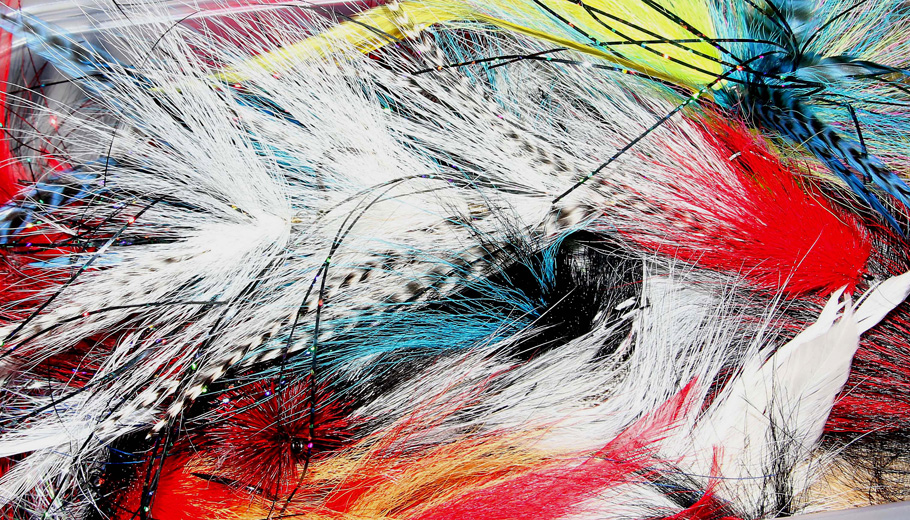Angler designs his own flies
By Holly Neumann
Dakota Lane found some thread and feathers and decided to make something out of the items.
That sparked an interest in making flies that the 18-year-old Little Wolf High School student now uses on all his trips to the water.
“My friends tease me about it sometimes, but I have a lot of fun doing it,” Lane said. “I look at it this way: if I can make something interesting for the fish, trick them into eating it and then catch one, that in itself is pretty awesome.”
Lane is self-taught and uses his own experiences to design his baits.
“Fish are curious,” he said. “They are like a curious kid that doesn’t have any hands. The only way they can test to see what it is is by putting it in their mouth.”
People typically stick to natural colors like black, gray and white when making flies, according to Lane.
“Flies are made to imitate the look of baitfish or a small bug pattern,” he said. “That is why those colors are often used. I like to add a little color, like chartreuse, red and blue. The best part is that if something is not working, I can make changes to size, color, you name it, so that the fish will bite. Ninety percent of the time, I can outfish anyone.”
Lure-making techniques
A lot of time, effort and materials, such as flash, buck tail, deer body hair and feathers, goes into making each lure.
“Deer body hair is hollow, so you want to use that for the head,” Lane said. “You use buck tail for body. It has longer strands and it will poof out when the water hits it. It’s going to get combed back and makes a bigger silhouette.”
The flash adds a little shimmer to each fly, Lane said.
“For musky fishing, you want to build the biggest fly you can with the least amount of material,” he said.
From Buford flies to Merger flies, there are literally millions of different styles a fly tier can make.
The best part about making the flies is that one can fish for anything with them, Lane said.
“Traditionally, people think you can only trout fish with them,” he said. “You can chase anything with a fly rod. I have caught just about every kind of fish on a fly.”
Art of fly-fishing
Fly-fishing is an art to Lane.
“It’s a lot more fun than regular fishing,” he said. “With traditional fishing, your bait is heavy, your line is light and your rod is really stiff. With fly-fishing, it’s just the opposite. Your fly is light, your line is really heavy and your rod is a little more flimsy. That is because the line is pulling your fly through the air vs. your bait pulling itself through the air.
“It’s all about the form you use,” he added. “There is a definite technique.”
Lane received his first fly rod as a gift from his father, Allen, while Allen was serving in Iraq.
“I bought him the rod, now he is teaching me how to fish,” he said. “It is a little humbling. He is good at it and well, I still have a little bit of work to do.”
Lane’s advice for those interested in making flies or fly fishing is to try it once.
“Try starting with someone,” he said. “Let them show you what to do and don’t give up. Like I said, it’s an art. Learn from someone who knows, then make it your own.”


